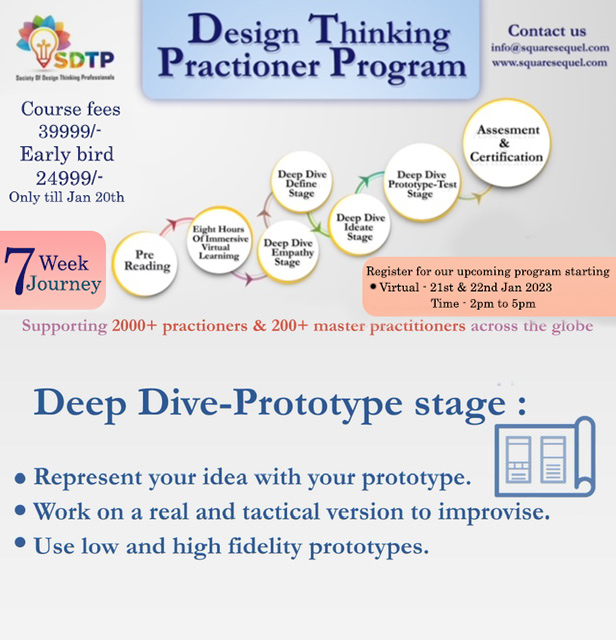Becoming a boss was a huge career transition for Jahnvi and it came with many new responsibilities. She was now a part of something bigger than herself and her success was no longer dependent on her work alone but on the work delivered by the people in her team. She found a way to make the shift and learn ways to lead well and she was taking time to cover every possible topic on her inquisitive journey.
On her journey of transitioning into her new role, she has put together the following topics – the requisites of becoming a first-time manager, her values, locus of control, setting goals, and achieving them, her learnings from The Strangest Secret, how to handle the missed goals, an overview on feedback, and the gateway to discover the blind spot.
Jahnvi has recently understood that providing effective feedback to her team is critical to maintaining a capable workforce. She comprehended that the importance of acquiring accurate information fuels feedback decisions and obtaining relevant data and enhancing the validity of feedback by collecting information from different sources is critical to this process.
One thing that impacts the subsequent performance of the employee is the type of feedback they are receiving. As a manager, Jahnvi was responsible for providing the right type of feedback to her team members and to do that effectively, she had to be aware of the different types of feedback.
Types Of Feedback

Every type of feedback serves a unique purpose, reframes the perspective, and helps navigate different situations. Research shows that effective feedback affects leadership effectiveness and performance. Jahnvi wanted to learn more about different feedback styles to use them appropriately with her team to give them every chance they deserve to excel in their roles and responsibilities.
Constructive feedback
According to studies, while constructive feedback is regarded negatively, it is what people want. As a matter of fact, 92% of employees believe that positive comments can help them perform better.
Assume your employee has overlooked a few details on some recent projects. You initially let it go. You are aware that he is currently juggling a number of projects. However, as some initiatives wind down, you find the same errors.
You decide to bring these errors up in your next one-on-one meeting. You begin with what you’ve seen he does really well. But then you offer some constructive criticism on the pattern of errors. You then conclude with favorable feedback. This type of constructive feedback is known as a feedback sandwich.
You inquire as to how you may assist and guide his development in this area. He thanks the input and realizes that he needs some professional development.
When an employee requests feedback, they usually mean constructive feedback. Listen carefully and attempt to figure out what they want input on and to what extent. If possible, clarify. You don’t want to spend hours drafting an in-depth review of a new product when your colleague just requested your opinion on the marketing strategy.
Upward feedback
When supervisors elicit feedback from their direct reports, this is known as upward feedback. It’s a critical component of feedback that isn’t always promoted in some businesses. However, if there’s one thing we know about the employee experience, it’s that employee voices must be heard. You may help to foster a feedback culture by encouraging managers to solicit input from their staff. It has the potential to foster trust, psychological safety, and genuine change. It also provides employees with some control over their work, work environment, and relationships.
A manager is in charge of a team of four employees. She is new to team management, and this specific team just came into existence. She chooses to ask how she’s doing in one-on-one sessions with each of her direct reports.
Two of her direct reports provide feedback. They believe she might do a better job communicating the aim of their efforts so that they grasp the goals. Another direct report suggests a new project management software to help her with the work.
Without this feedback, she would have had no idea how to address the demands of her team. She’s relieved she asked for feedback. However, she’s also thankful that her team felt psychologically safe enough to express their true feelings.
Corrective Feedback
It refers to providing employees with information on areas where they need improvement or adjustment in their performance, behavior, or attitude in order to help them develop their skills, enhance their performance, and contribute to the all-inclusive success of the organization. Here’s an example of corrective feedback in an organizational context:
An employee has been consistently arriving late to work, which is causing delays in the team’s productivity.
His manager politely shared his feedback, “I noticed that you’ve been arriving late to work frequently. This is affecting the team’s productivity and causing delays in our projects. I understand that unforeseen circumstances can arise, but it’s important that you make every effort to arrive on time. Going forward, please make sure to plan your commute and leave early enough to ensure that you arrive on time. Let me know if you need any support or if there’s anything we can do to help you.”
In this example, the feedback is specific, timely, and actionable. It identifies the specific behavior that needs to be corrected and provides suggestions for improvement. It also communicates the impact of the employee’s behavior on the team’s productivity and offers support and assistance to help the employee improve their performance.
Confirmative feedback
Contrary to popular belief, feedback is not always negative. Employee recognition and appreciation are critical components in positively engaging your workforce. Organizations that acknowledge and praise their staff on a regular basis see improved performance, stronger relationships, and higher job satisfaction.
For example, a CEO might acknowledge all employees for their exceptional contributions to the organization. He acknowledged team members by name, praised victories, and thanked everyone for their efforts.
When combined with positive feedback and recognition, corrective feedback is a potential tool for improving employee relationships and performance. Furthermore, according to a recent Harvard Business Review research, 57% of employees preferred corrective feedback over positive feedback, and 72% believed corrective feedback would increase their performance. Constructive feedback, when done correctly, can benefit both parties — the manager has a pool of better employees, and the employee can grow and develop. Furthermore, leaders who solicit critical feedback are perceived to be more effective by their employees, peers, and superiors.
Jahnvi found this information which has certainly demystified her belief about feedback, “it is not always negative.” She shuffled through research that showed that once people receive negative feedback, they isolate themselves from the ones who delivered it. It is easier for their performance to hit the rock bottom while feeling unsupported and alone.
In that instant, she decided to tackle her team in a way that the feedback is delivered in a way that could help them flourish in their future endeavors. She also emphasized recognizing her people for implementing better behaviors and having further developmental conversations if their actions remain unchanged.
She is now keen to understand the frameworks to support the type of feedback she is delivering to her people, as it can make her the North Star or the compass for her team or can dump her efforts in the deep pit if handled incorrectly.
Frameworks For Feedback

Jahnvi, like any other manager, is aware of the fact that feedback is the essence of growth and employee development. However, she struggles with the idea of omitting the right words while sharing such delicate insights into someone’s performance. She is timorous of the conflict in fear of upsetting the recipient or facing uncomfortable conversations. She wants to be sure of the feedback she provides to her team and she found that feedback frameworks could be of great help in structuring the feedback for her. Here are the two frameworks she found intriguing.
SBID Model
Jahnvi’s superiors have shared their insights on feedback and they asked her to be specific while providing feedback to her team members while remaining empathetic, objective, and open-minded. It felt like a big checklist for what may amount to a single statement. She was wondering about ways to reduce anxiety while she adhered to the best practices.
When providing feedback, having a structure to refer to for direction is beneficial. The SBIR framework is one of the most useful tools in my communication toolbox: Situation, Behavior, Impact, and Desired Situation. This is how it works:
- Situation: Define the when and where of the situation.
- Behavior: Explain the specific behavior of the person you are addressing.
- Impact: Explain the impact of their behavior or actions on other people or their own performance.
- Desired situation: What do you want the situation to be like, and what message do you want to convey to direct the actions in the right way?
Let’s understand with an example.
A manager talking to his team member in the meeting – “So on Monday it was your turn to present something for us to learn. I admire the way you create your presentations, however, the way you explained the concept was not entirely clear to the team. You were rushing through the presentation and I had to jump in to make others understand the concept in a simple way. Next time, make sure you help us with some examples to relate with, and let me know if you need any help or support.
This is the way the team member collects his thoughts –
Situation: Presentation on Monday.
Behavior: Rushing through the concept.
Impact: Other team members were unable to understand the concept.
Desired situation: Try to use some examples to make the concept understood in a simpler way.
Because of its simplicity, the SBID model is popular among enterprises. When there is a need for feedback based on performance, the SBID model is used to measure and improve the performance of the employees. It also removes emotions from the equation. When adopting this feedback paradigm, it is critical to employ “I” words and refrain from passing judgment; otherwise, the feedback you provide will be undermined.
CHIPS Model
It is the model used to give and receive feedback based on development. It is designed to be a constructive and actionable way to provide feedback that can help recipients improve their performance.
- Constructive: The feedback should be constructive, meaning it should be helpful and aimed at improving the recipient’s performance. It should not be critical or negative, however, focus on identifying areas of improvement and offering suggestions on how to address them.
- Honest: The feedback should be honest and transparent, meaning it should reflect the speaker’s genuine thoughts and feelings about the recipient’s performance. It should not sugarcoat issues or avoid difficult conversations.
- Immediate: The feedback should be given as soon as possible after the performance in question. This helps ensure that the feedback is relevant and fresh in the recipient’s mind and that issues can be addressed in a timely manner.
- Performance-based: The feedback should be based on specific, observable performance metrics. This helps ensure that the feedback is objective and focused on measurable outcomes rather than subjective opinions.
- Set an action plan: The feedback should include a clear action plan for the recipient to follow in order to address any areas of improvement. This helps ensure that the feedback is actionable and that the recipient has a clear roadmap for making progress.
Jahnvi was sure that sharing feedback is a learning process and that it takes practice. She is on her journey to do everything that deems fit for her people because her people will look up to her at every turn and event. She knows that with the right support and coaching, she will contribute to unlocking human potential and help her team live with more clarity, passion, and purpose.
She knows that feedback skills will take her to new heights in her journey as a new manager, and she is taking the road uphill to understand it completely. She is a true believer in a growth mindset and is sweeping through every minute detail that will add up to her knowledge and help her team propel their performance.
She found an intriguing way to give and receive feedback in a much better way, a way of flipping the focus from the past to the future. The concept “feedforward” is coined by Dr. Marshall Goldsmith and not a lot of people are familiar with the practice of feedforward. It has the power to make a huge difference in the way people grow as professionals. She will delve into the details in the next article.
https://www.clearreview.com/how-to-give-corrective-feedback-through-coaching-conversations/
https://www.betterup.com/blog/types-of-feedback
https://www.lucidchart.com/blog/performance-feedback-models
https://www.linkedin.com/pulse/giving-feedback-try-sbir-framework-stacey-messier/
https://blog.vantagecircle.com/content/images/2022/11/Employee-feedback.png
https://www.digital.je/wp-content/uploads/2018/04/feedback-event.png
Written By: Jimmy Jain
Edited By: Afreen Fatima
Society of Design Thinking Professionals









